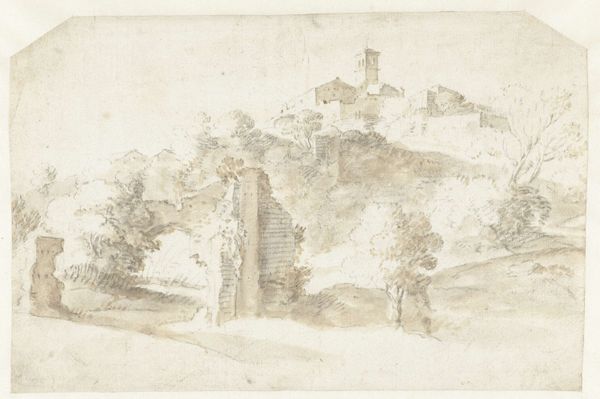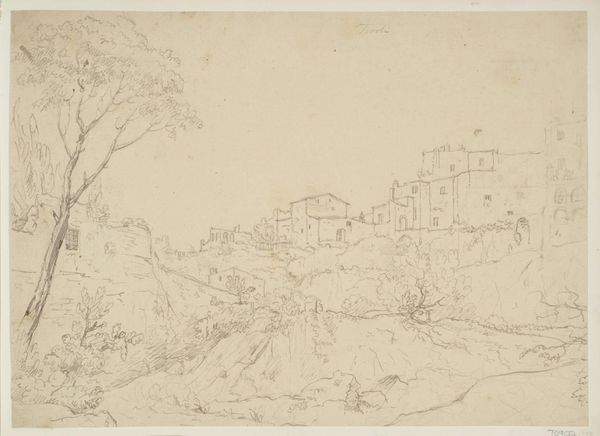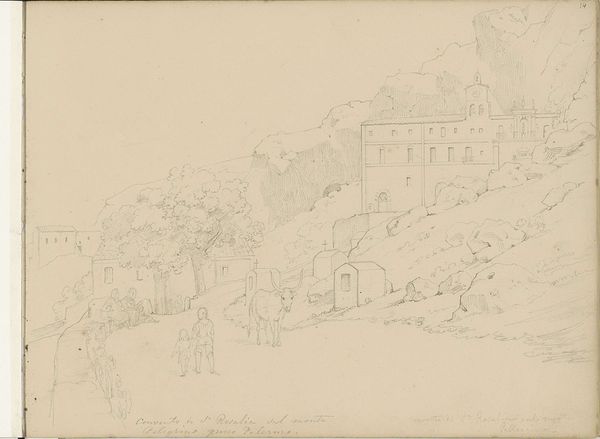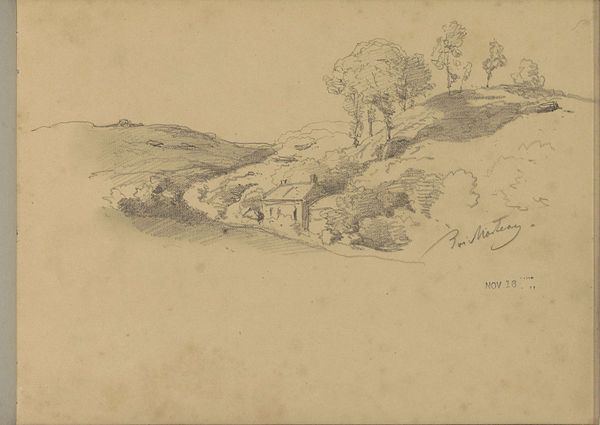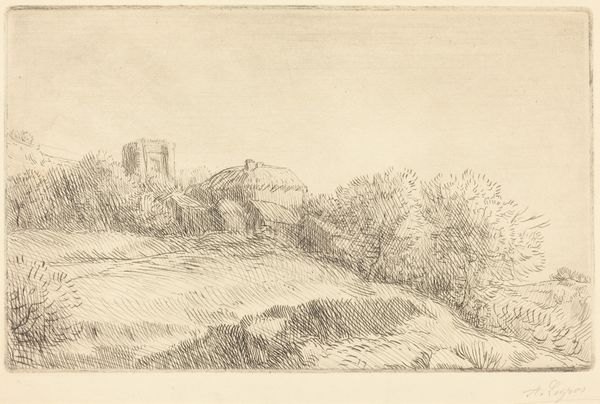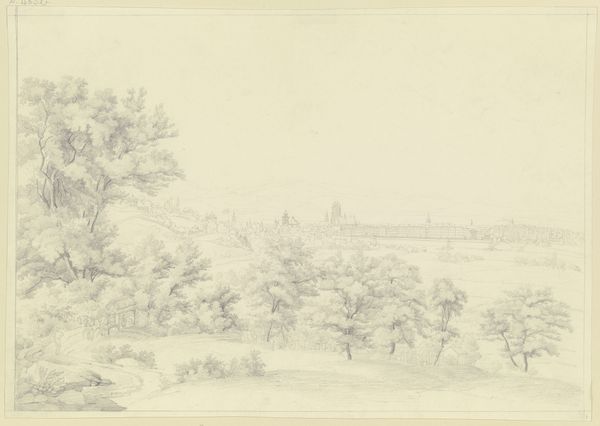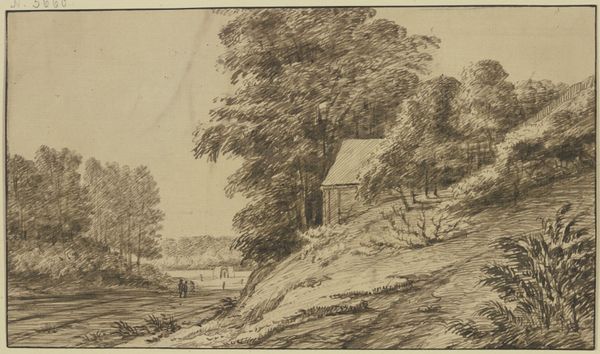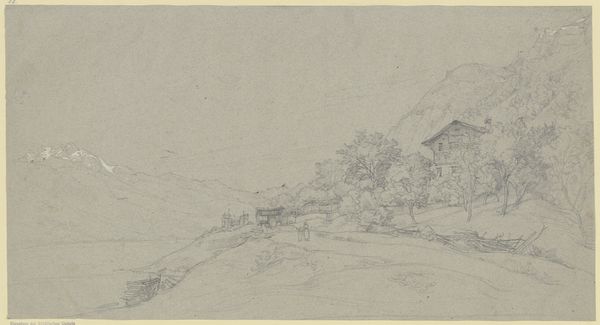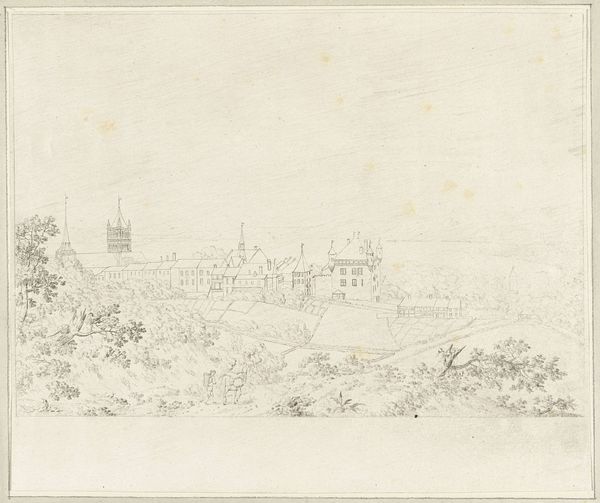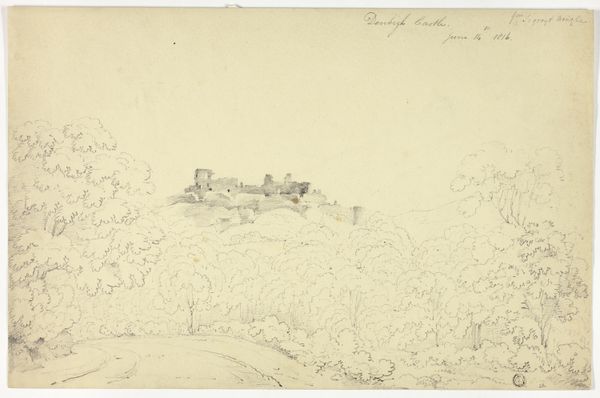
drawing, pencil
#
drawing
#
pencil sketch
#
landscape
#
romanticism
#
pencil
#
watercolor
Copyright: Rijks Museum: Open Domain
This is Gezicht op Ariccia, a drawing made with pen in 1830 by Jacobus Everhardus Josephus van den Berg. The drawing captures the town of Ariccia in a delicate wash of lines. A church dome punctuates the skyline, yet the landscape is softened by the diffuse light and gentle slopes that fade into the distance. Note how van den Berg uses a minimal yet strategic arrangement of lines to capture the scene's essence. This creates a structural framework that prompts questions about representation, space, and the act of seeing. Van den Berg engages with the picturesque tradition of landscape drawing, but does so in a manner that highlights the constructed nature of the image. The simplicity of the lines forces one to consider how perception is mediated. A semiotic system of natural and architectural forms reveals an understanding of how space is organized and understood. The lack of precise detail encourages an active interpretation, a reminder that art is not just a mirror but a lens through which we construct our understanding of the world.
Comments
No comments
Be the first to comment and join the conversation on the ultimate creative platform.
